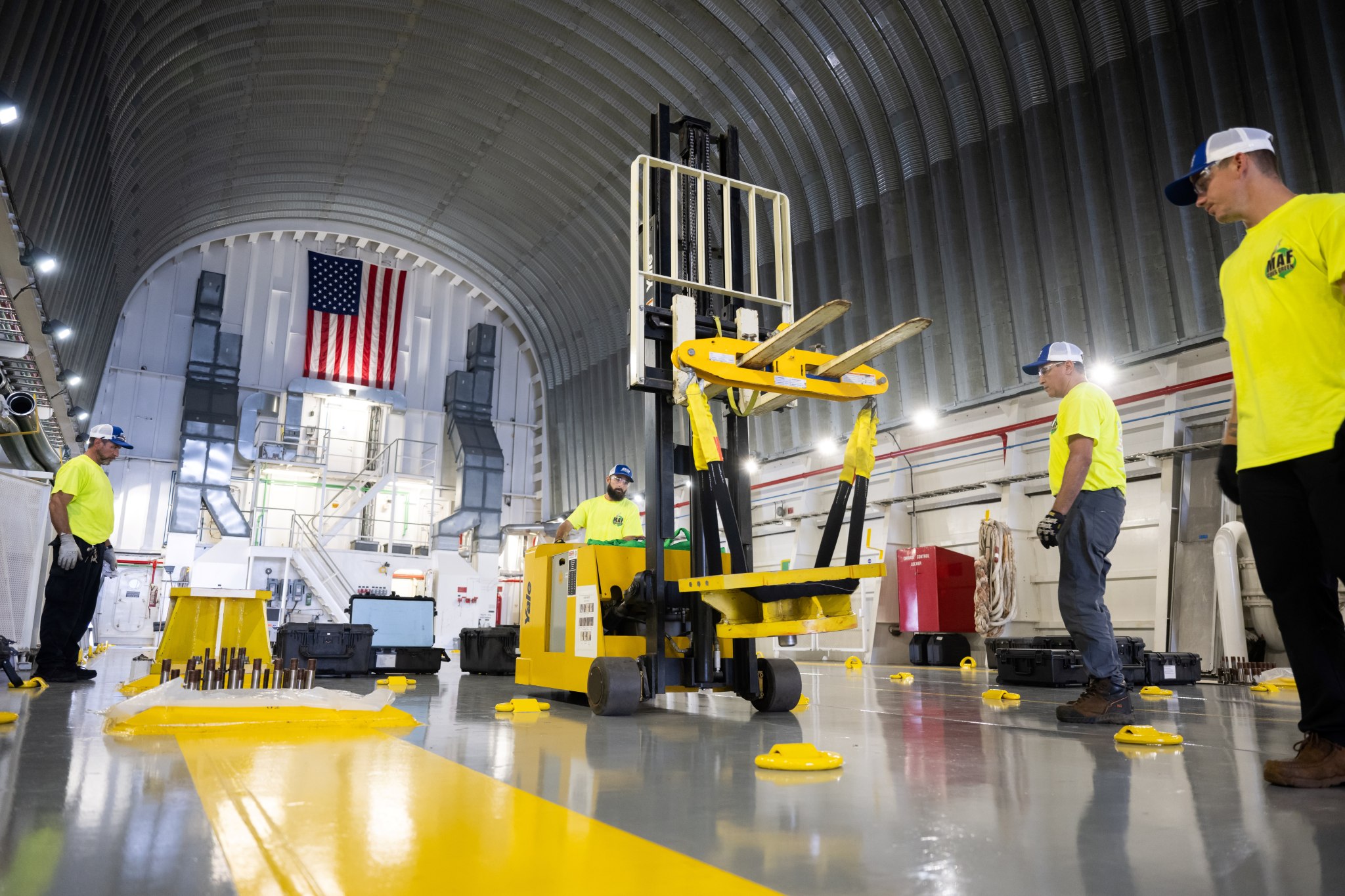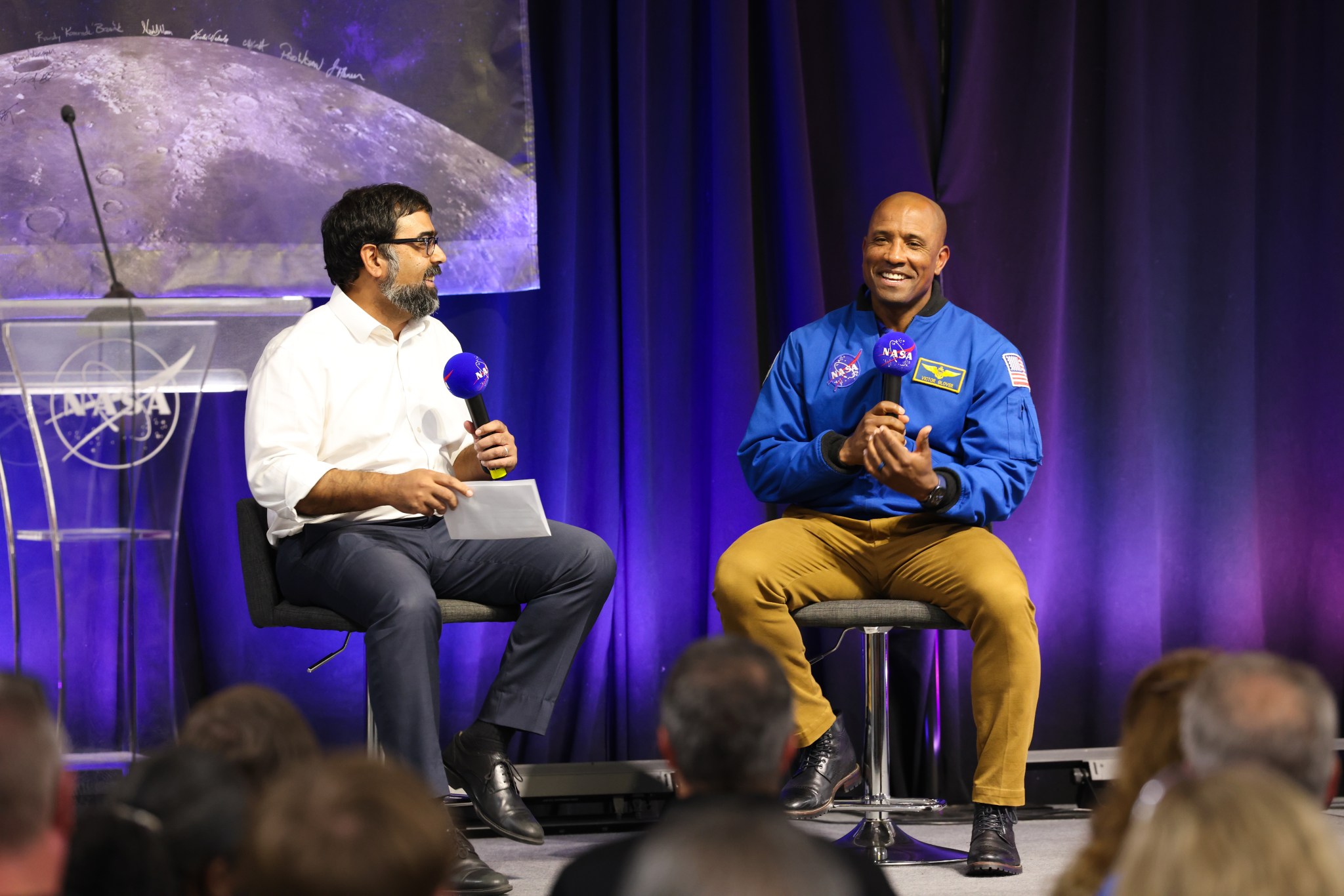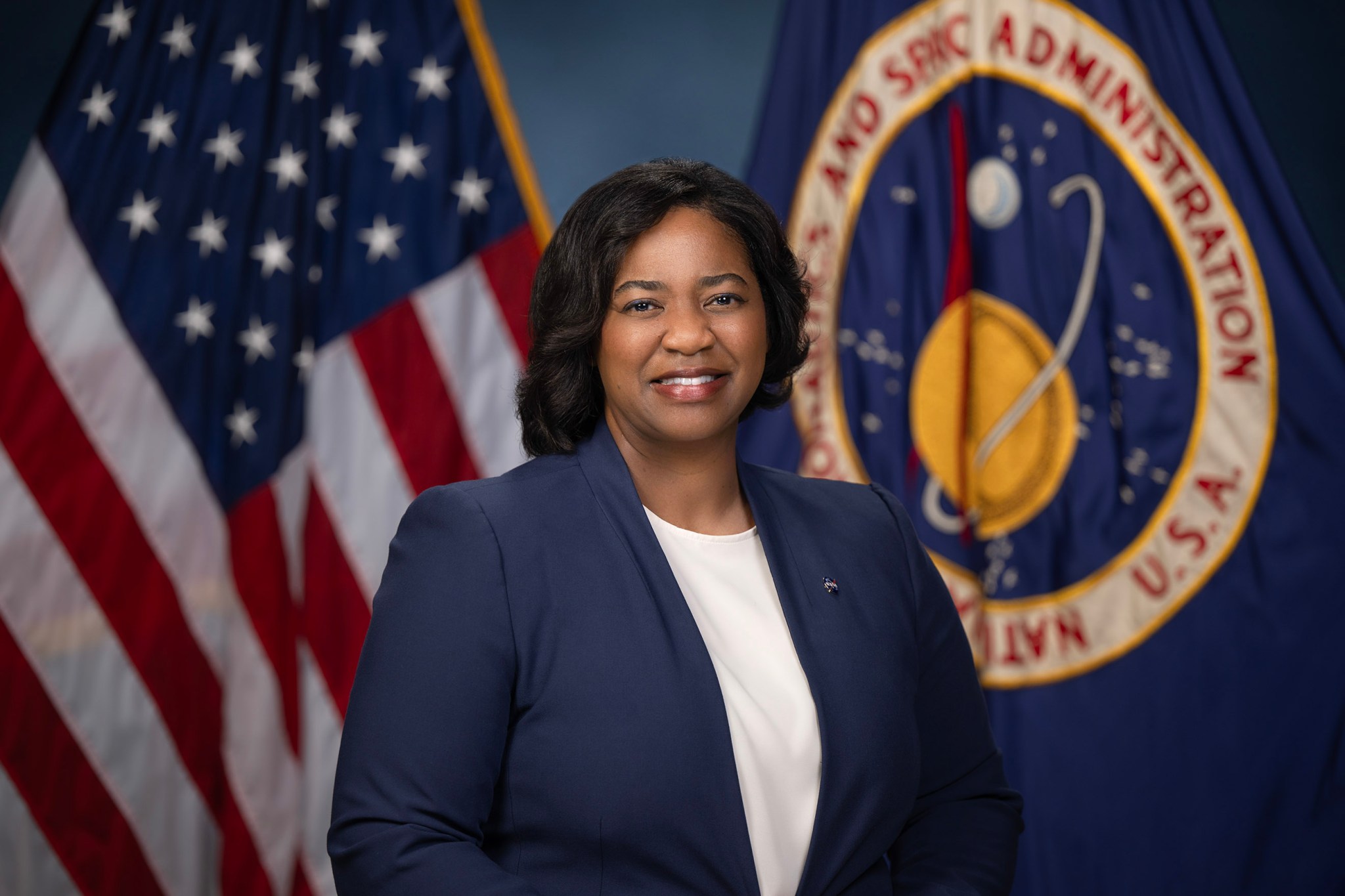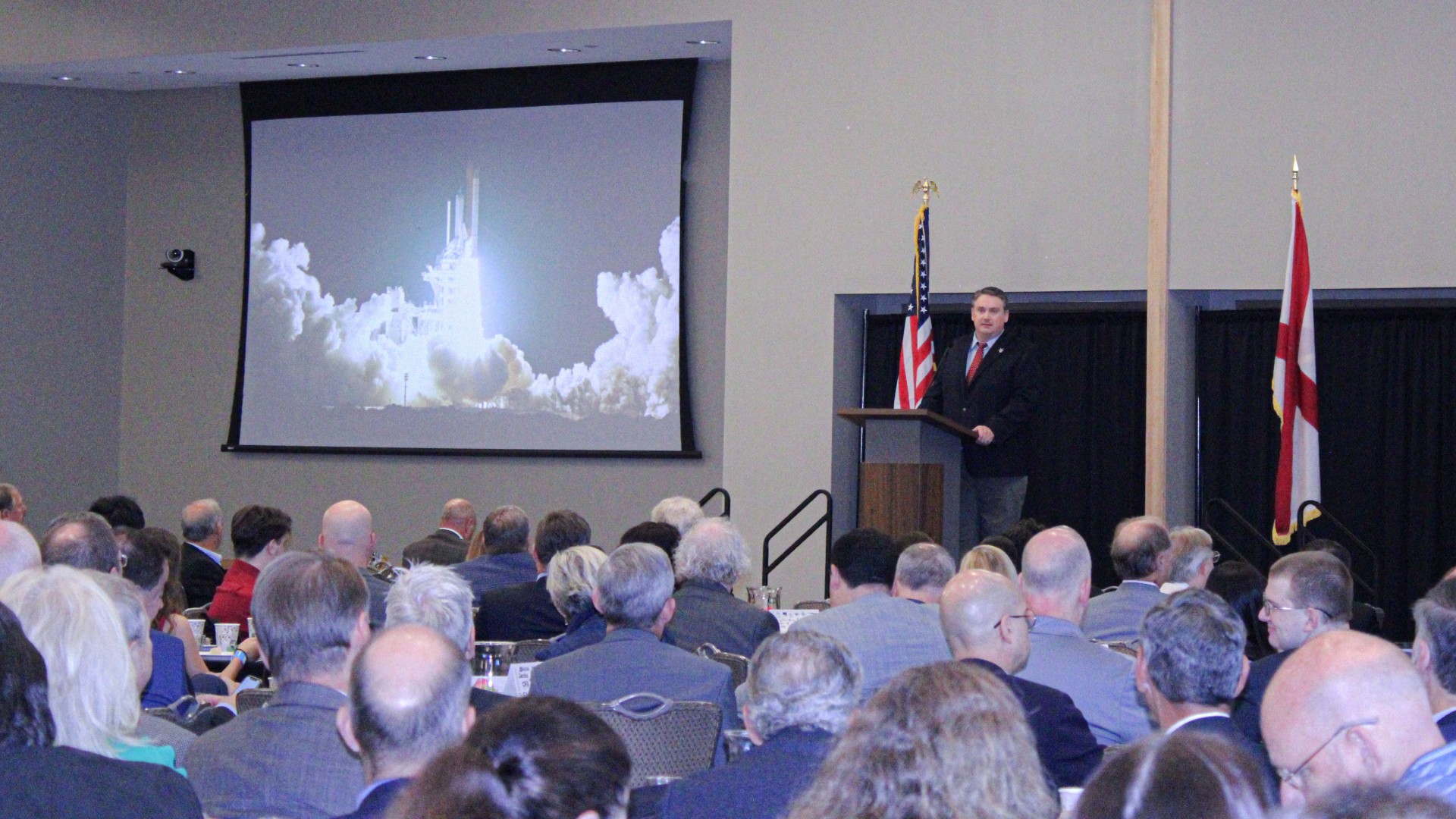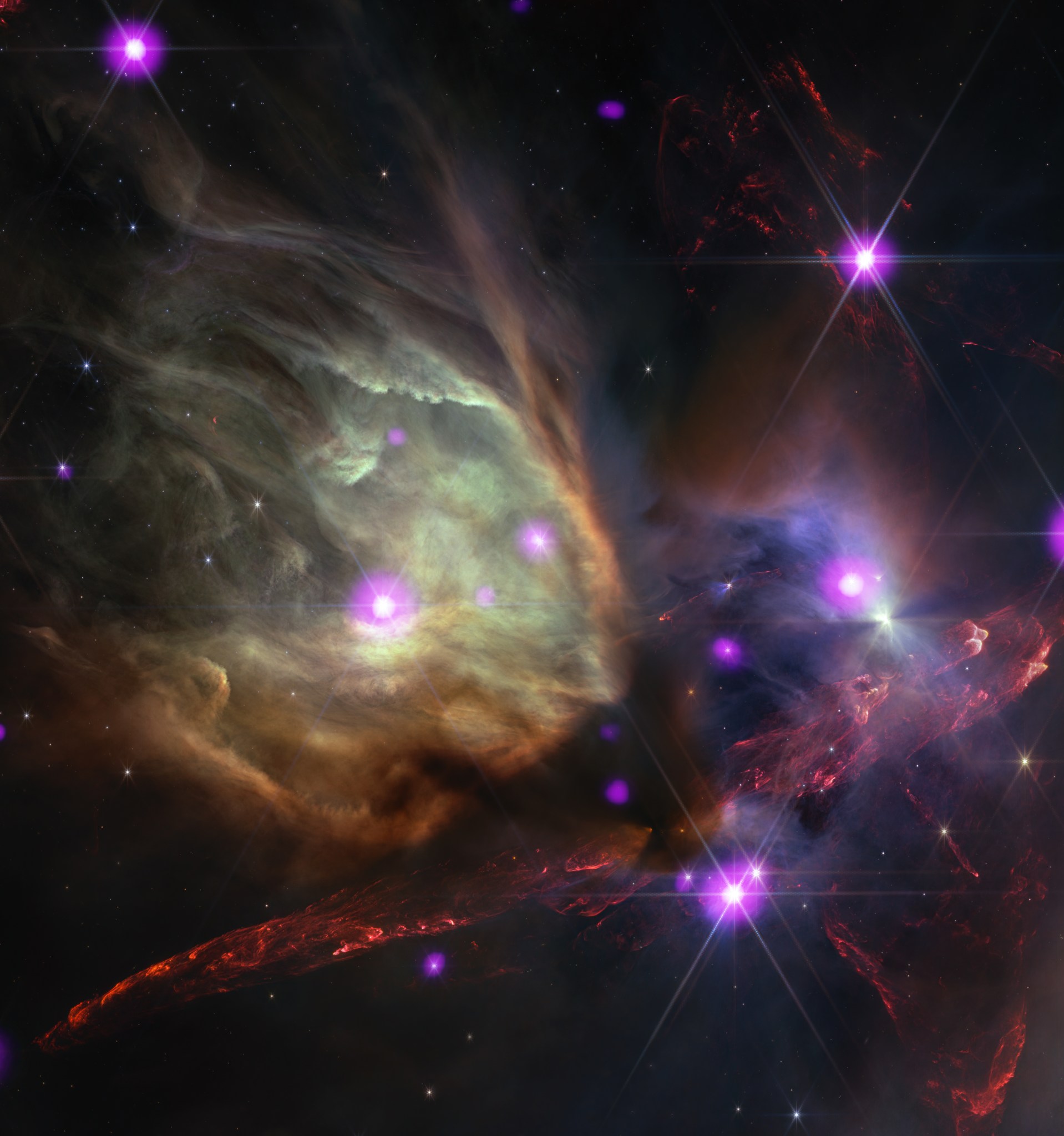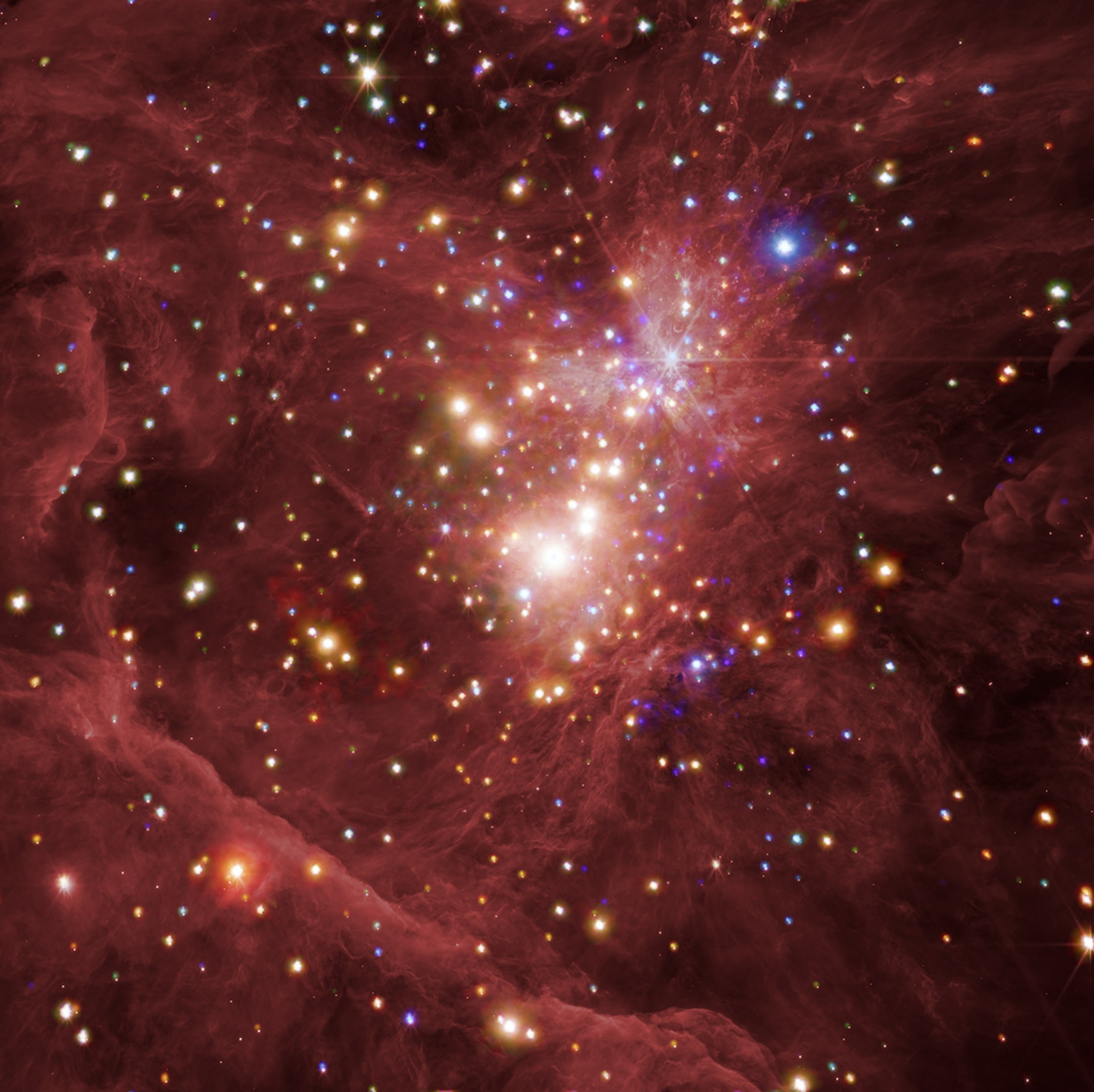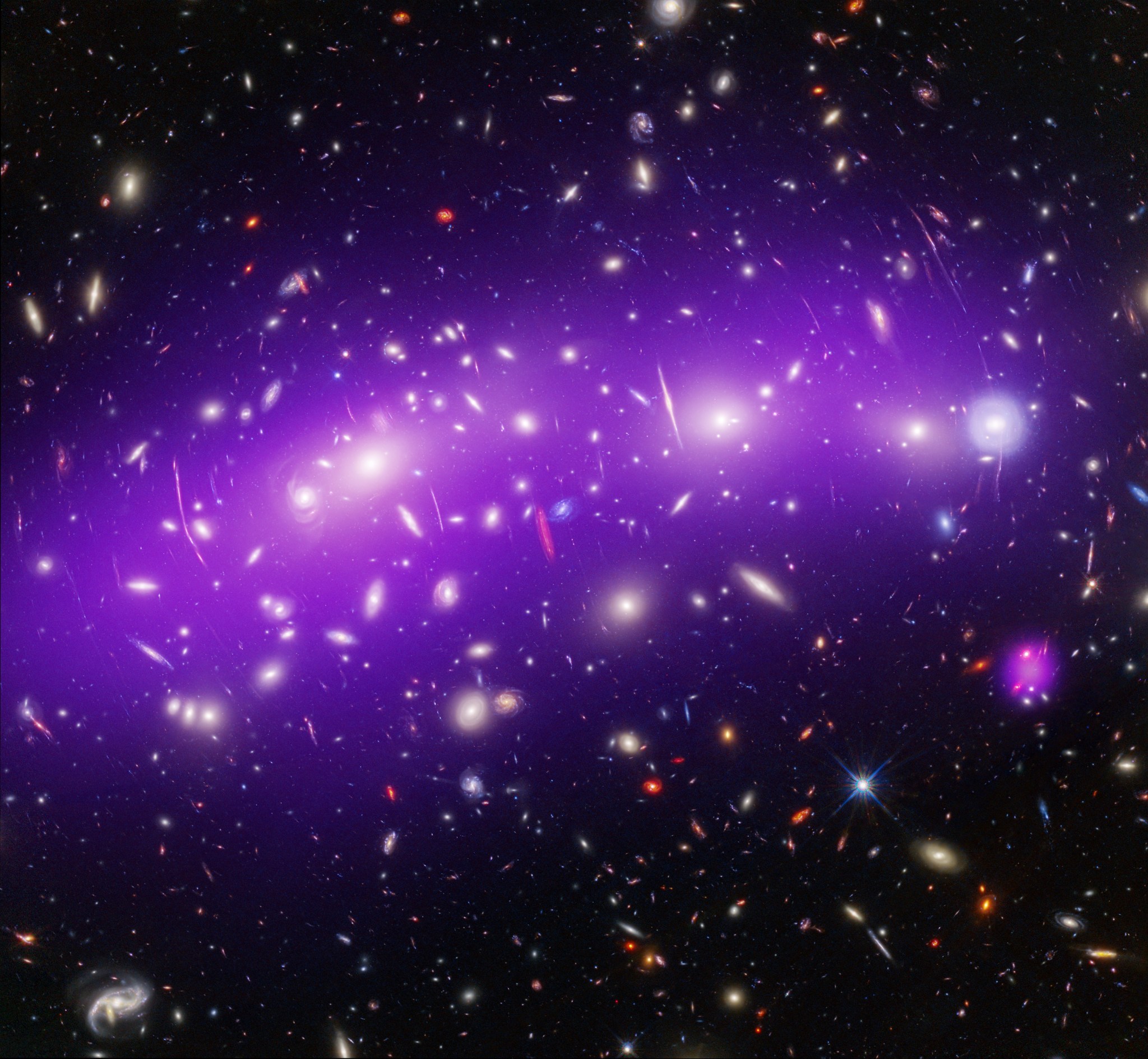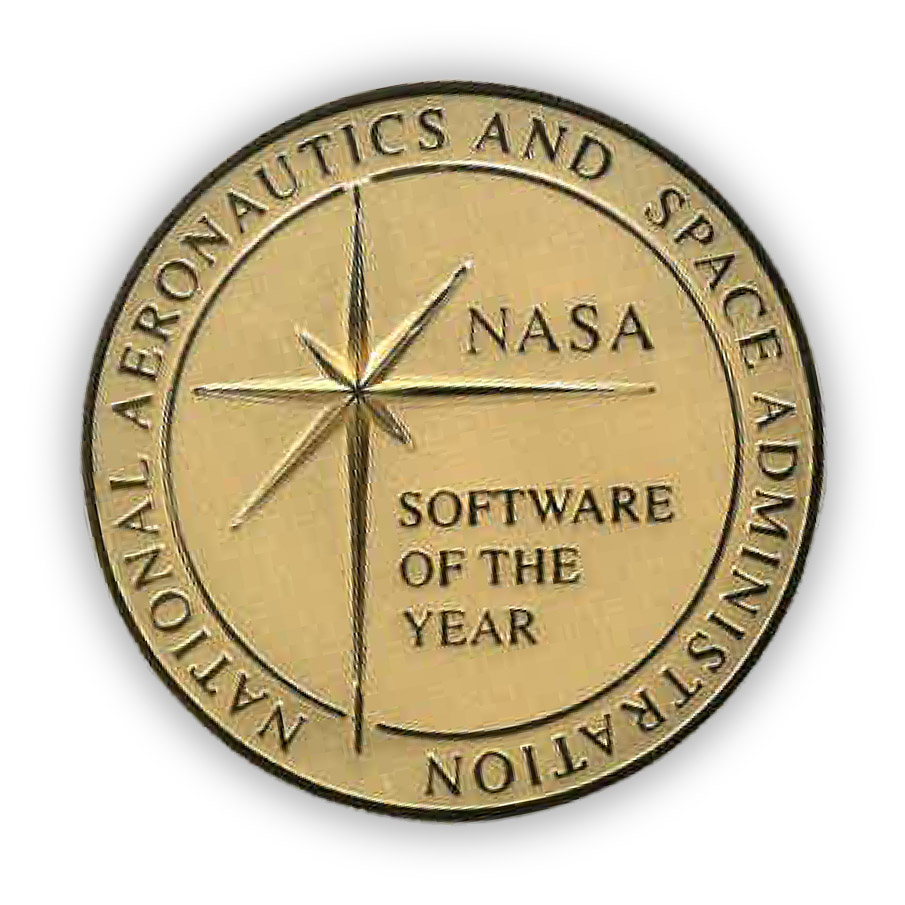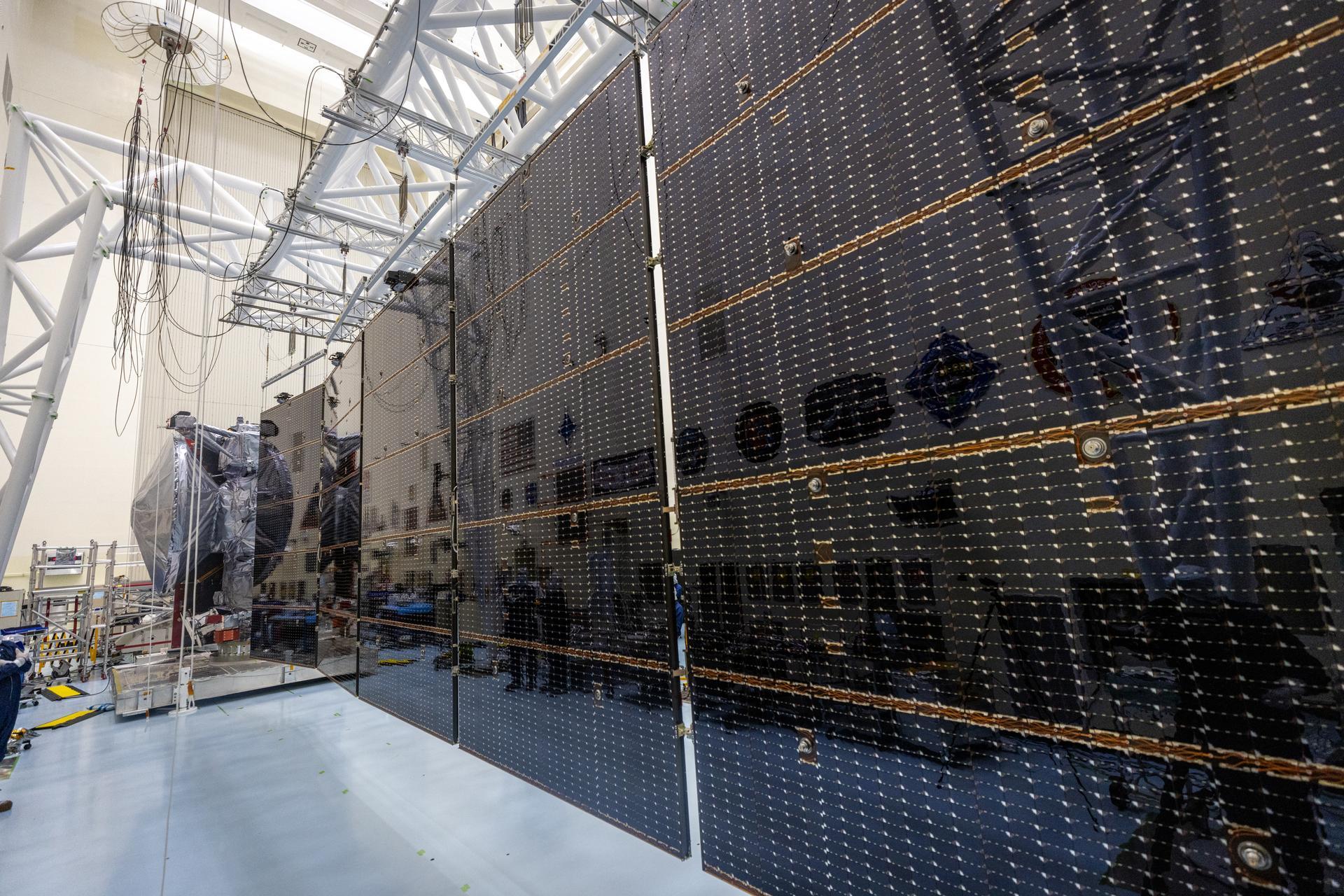The Marshall Star for July 17, 2024
NASA Ships Moon Rocket Stage Ahead of First Crewed Artemis Flight NASA rolled out the SLS (Space Launch System) rocket’s core stage for the Artemis II test flight from its Michoud Assembly Facility on Tuesday for shipment to the agency’s Kennedy Space Center. The rollout is key progress on the path to NASA’s first crewed mission to […]

The Marshall Star for July 17, 2024
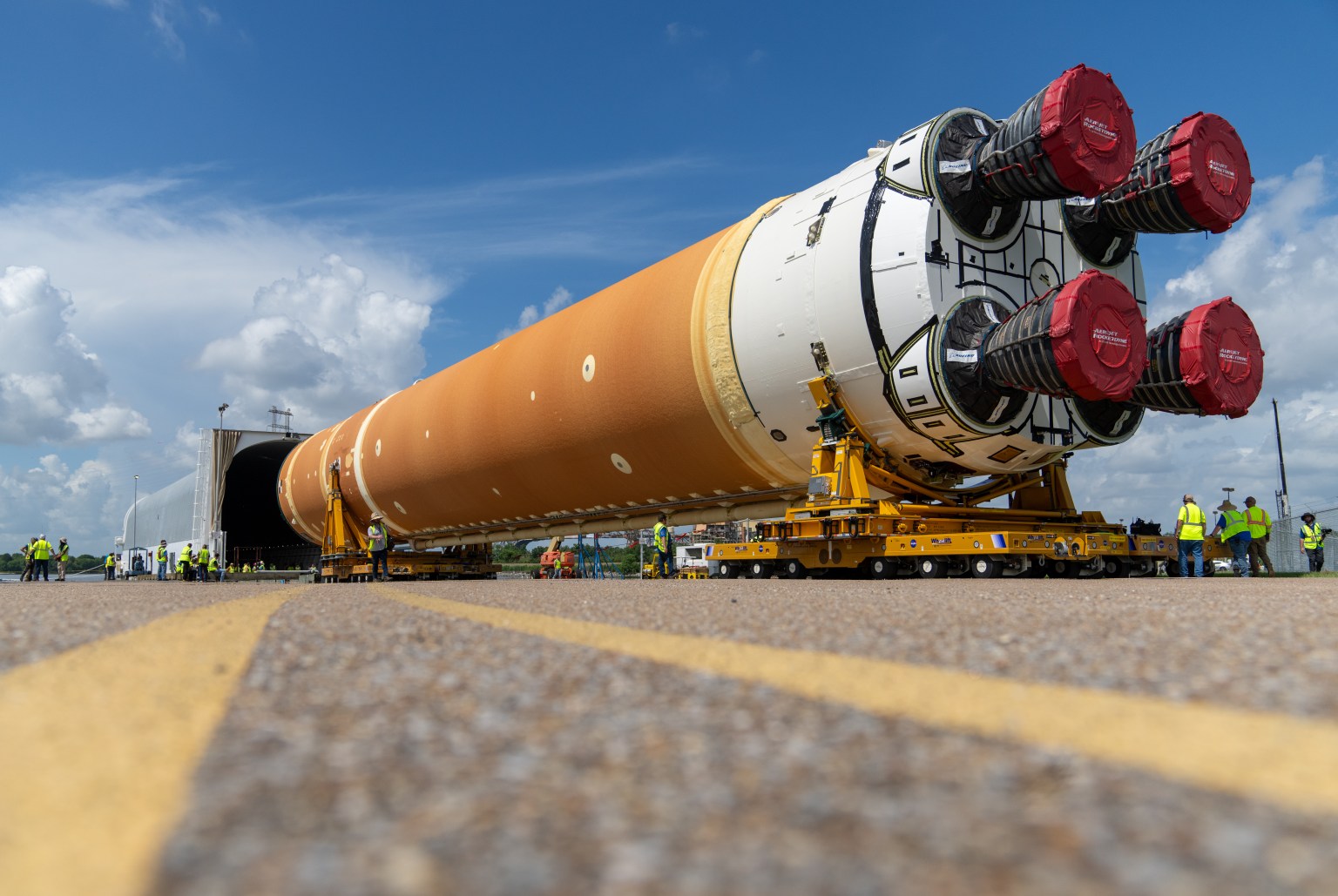
NASA Ships Moon Rocket Stage Ahead of First Crewed Artemis Flight
NASA rolled out the SLS (Space Launch System) rocket’s core stage for the Artemis II test flight from its Michoud Assembly Facility on Tuesday for shipment to the agency’s Kennedy Space Center. The rollout is key progress on the path to NASA’s first crewed mission to the Moon under the Artemis campaign.
Using highly specialized transporters, engineers maneuvered the giant core stage from inside Michoud to NASA’s Pegasus barge. The barge will ferry the stage more than 900 miles to Kennedy, where engineers will prepare it in the Vehicle Assembly Building for attachment to other rocket and Orion spacecraft elements.
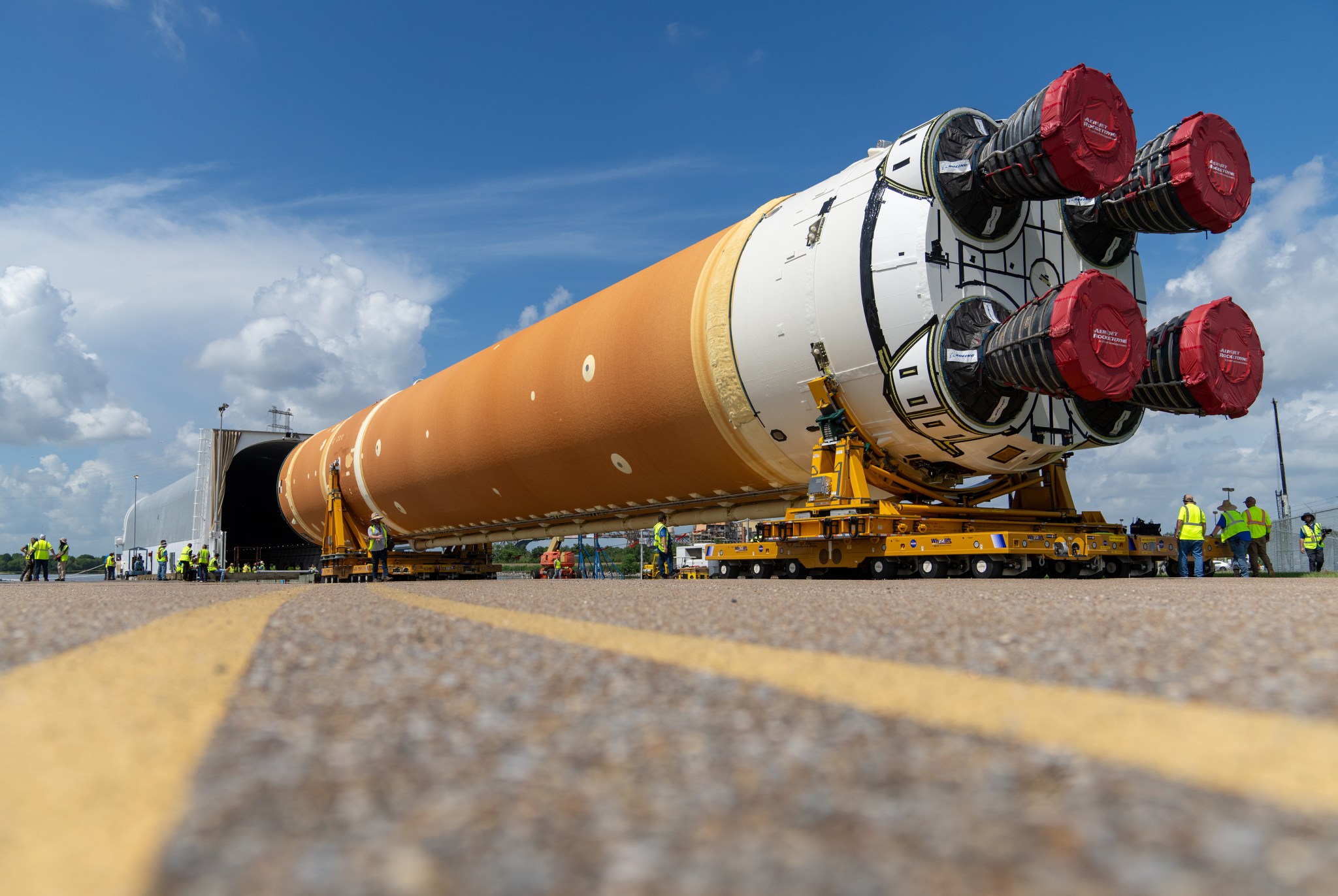
“With Artemis, we’ve set our sights on doing something big and incredibly complex that will inspire a new generation, advance our scientific endeavors, and move U.S. competitiveness forward,” said Catherine Koerner, associate administrator for NASA’s Exploration Systems Development Mission Directorate at NASA Headquarters. “The SLS rocket is a key component of our efforts to develop a long-term presence at the Moon.”
Technicians moved the SLS rocket stage from inside Michoud on the 55th anniversary of the launch of Apollo 11 on July 16, 1969. The move of the rocket stage for Artemis marks the first time since the Apollo Program that a fully assembled Moon rocket stage for a crewed mission rolled out from Michoud.
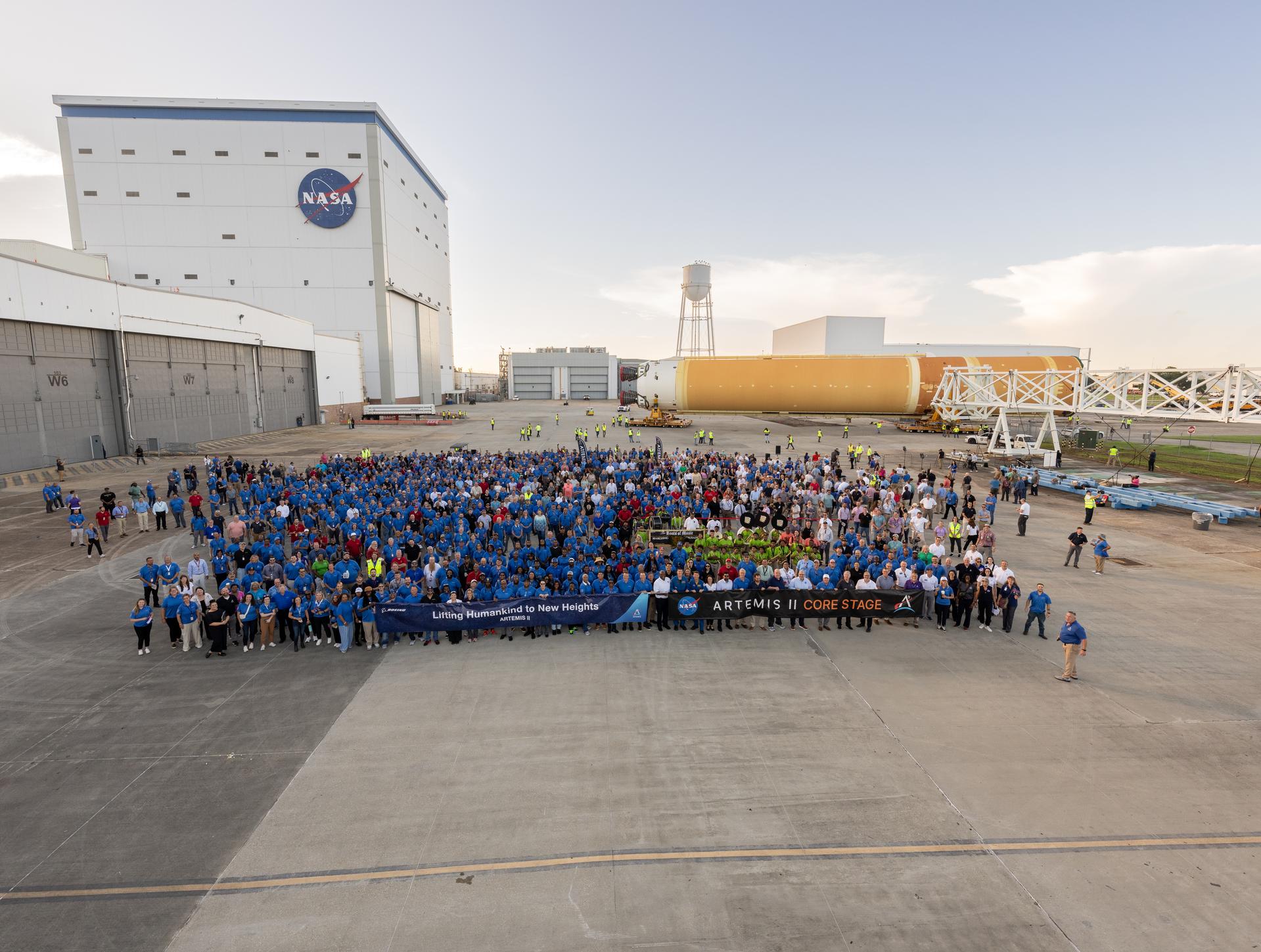
The SLS rocket’s core stage is the largest NASA has ever produced. At 212 feet tall, it consists of five major elements, including two huge propellant tanks that collectively hold more than 733,000 gallons of super-chilled liquid propellant to feed four RS-25 engines. During launch and flight, the stage will operate for just over eight minutes, producing more than 2 million pounds of thrust to propel four astronauts inside NASA’s Orion spacecraft toward the Moon.
“The delivery of the SLS core stage for Artemis II to Kennedy Space Center signals a shift from manufacturing to launch readiness as teams continue to make progress on hardware for all major elements for future SLS rockets,” said John Honeycutt, SLS program manager at NASA’s Marshall Space Flight Center. “We are motivated by the success of Artemis I and focused on working toward the first crewed flight under Artemis.”
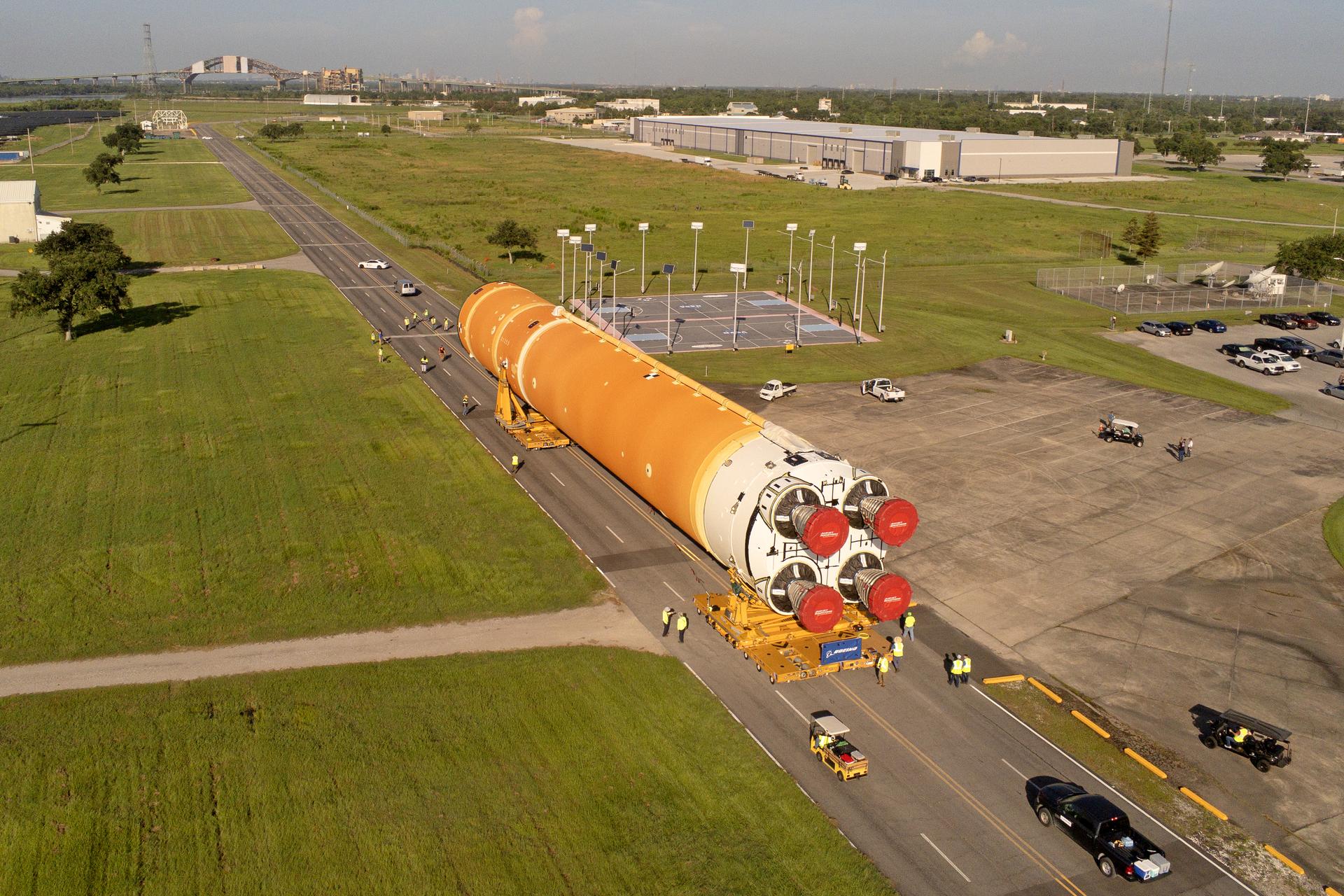
After arrival at Kennedy, the stage will undergo additional outfitting inside the Vehicle Assembly Building. Engineers then will join it with the segments that form the rocket’s twin solid rocket boosters. Adapters for the Moon rocket that connect it to the Orion spacecraft will be shipped to Kennedy this fall, where the interim cryogenic propulsion stage is already. Engineers at Kennedy continue to prepare Orion and exploration ground systems for launch and flight.
All major structures for every SLS core stage are fully manufactured at Michoud. Inside the factory, core stages and future exploration upper stages for the next evolution of SLS, called the Block 1B configuration, currently are in various phases of production for Artemis III, IV, and V. Beginning with Artemis III, to better optimize space at Michoud, Boeing – the SLS core stage prime contractor – will use space at Kennedy for final assembly and outfitting activities.
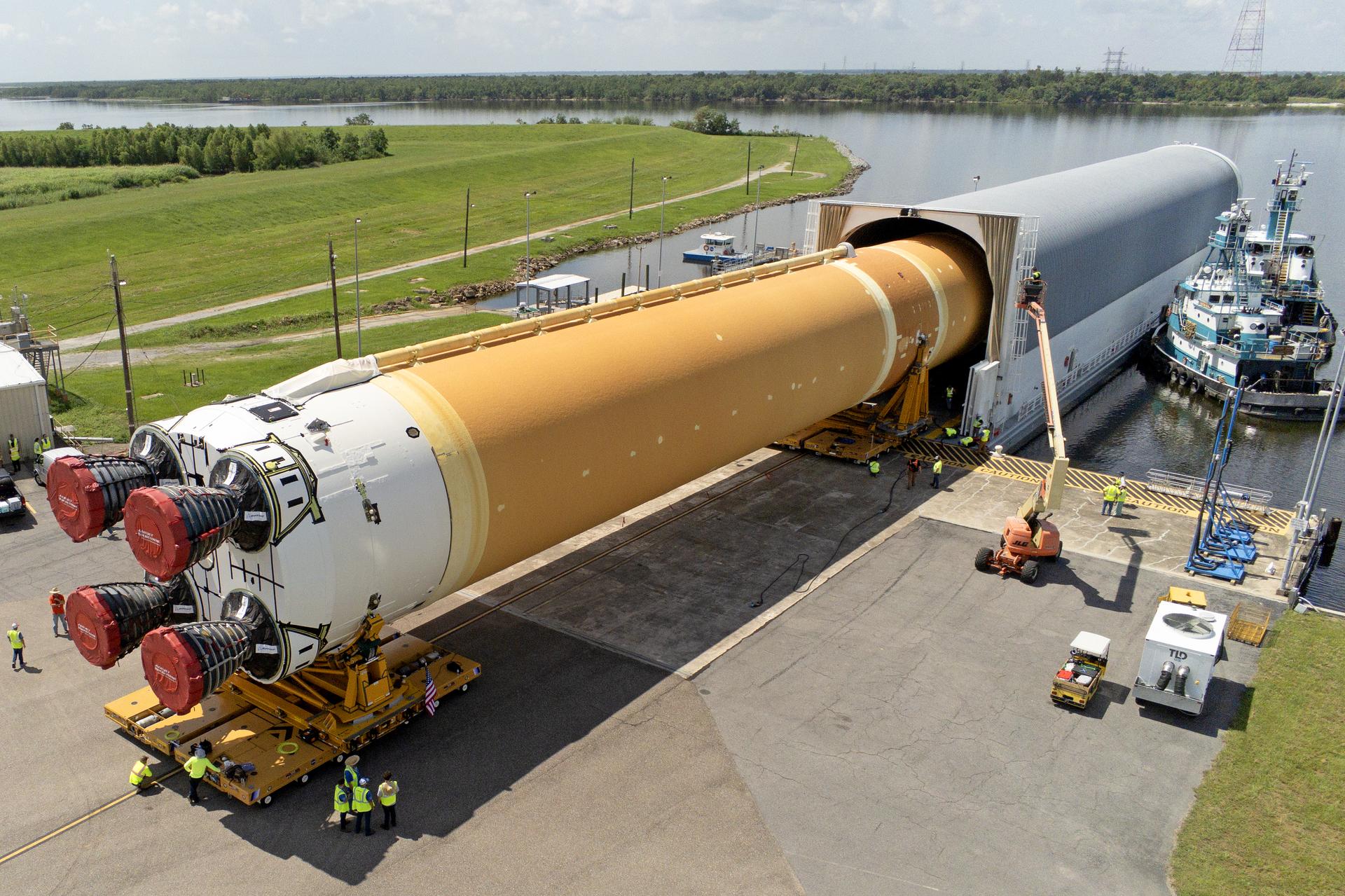
Building, assembling, and transporting the SLS core stage is a collaborative effort for NASA, Boeing, and lead RS-25 engines contractor Aerojet Rocketdyne, an L3Harris Technologies company. All 10 NASA centers contribute to its development with more than 1,100 companies across the United States contributing to its production.
NASA is working to land the first woman, first person of color, and its first international partner astronaut on the Moon under Artemis. SLS is part of NASA’s backbone for deep space exploration, along with the Orion spacecraft, supporting ground systems, advanced spacesuits and rovers, the Gateway in orbit around the Moon, and commercial human landing systems. SLS is the only rocket that can send Orion, astronauts, and supplies to the Moon in a single launch.
NASA Barge Preparations for Artemis II Rocket Stage Delivery
Team members installed pedestals aboard NASA’s Pegasus barge to hold and secure the massive core stage of NASA’s SLS (Space Launch System) rocket, preparing NASA barge crews for their first delivery to support the Artemis II test flight around the Moon. The barge ferried the core stage on a 900-mile journey from the agency’s Michoud Assembly Facility to its Kennedy Space Center.
The Pegasus crew began installing the pedestals July 10. The barge, which previously was used to ferry space shuttle external tanks, was modified and refurbished to compensate for the much larger and heavier core stage for the SLS rocket. Measuring 212 feet in length and 27.6 feet in diameter, the core stage is the largest rocket stage NASA has ever built and the longest item ever shipped by a NASA barge.
Pegasus now measures 310 feet in length and 50 feet in width, with three 200-kilowatt generators on board for power. Tugboats and towing vessels moved the barge and core stage from Michoud to Kennedy, where the core stage will be integrated with other elements of the rocket and prepared for launch. Pegasus is maintained at NASA Michoud.
NASA is working to land the first woman, first person of color, and its first international partner astronaut on the Moon under Artemis. SLS is part of NASA’s backbone for deep space exploration, along with the Orion spacecraft, supporting ground systems, advanced spacesuits and rovers, the Gateway in orbit around the Moon, and commercial human landing systems. SLS is the only rocket that can send Orion, astronauts, and supplies to the Moon in a single launch.
NASA’s Marshall Space Flight Center manages the SLS Program and Michoud.
Michoud Marks Artemis II Milestone with Employee Event Featuring NASA Astronaut Victor Glover
Moon to Mars Program Deputy Associate Administrator Amit Kshatriya, left, and NASA astronaut Victor Glover, right, speak to Michoud Assembly Facility team members on July 15 as part of a Space Flight Awareness event marking Artemis II’s core stage completion. The core stage was rolled out of Michoud’s rocket factory on July 16 for transportation to NASA’s Kennedy Space Center, where it will be integrated with the Orion spacecraft and the remaining components of the SLS (Space Launch System) rocket. (NASA)
Tawnya Laughinghouse Named Director of Marshall’s Materials and Processes Laboratory
Tawnya Plummer Laughinghouse has been named to the Senior Executive Service position of director of the Materials and Processes Laboratory in the Engineering Directorate at NASA’s Marshall Space Flight Center, effective July 7.
The Materials and Processes Laboratory provides science, technology, and engineering support in materials, processes, and products for use in space vehicle applications, including related ground facilities, test articles and support equipment. As director, Laughinghouse will oversee a workforce of science and engineering experts, as well as several research and development efforts in world-class facilities, including the National Center for Advanced Manufacturing.
Laughinghouse has more than 20 years of experience at NASA holding various technical leadership, supervisory, and programmatic positions. Since October 2018, she has been manager of the Technology Demonstration Missions (TDM) Program for the Agency, managing the implementation of a diverse portfolio of advanced space technology projects led by NASA Centers and industry partners across the nation with a goal to rapidly develop, demonstrate, and infuse revolutionary, high-payoff technologies. Under her leadership, the program helped expand the boundaries of the aerospace enterprise with the launch of 10 advanced technologies to space between 2018 and 2024. In January 2017, she was competitively selected as deputy manager of the TDM Level 2 Program Office within Marshall’s Science and Technology Office.
In 2014, she was selected as a member of the NASA Mid-Level Leadership Program. During that time, she completed a detail at NASA Headquarters supporting an Office of Chief Engineer/Office of Chief Technologist joint study on NASA’s Technology Readiness Assessment (TRA) Process.
Laughinghouse began her NASA career at Marshall in 2004 in the Materials and Processes Laboratory as lead materials engineer for the Space Shuttle Reusable Solid Rocket Motor (RSRM) Booster Separation Motor aft closure assembly. In this role, she also provided technical expertise in advanced materials for high temperature applications and thermal protection systems for solid and liquid rocket propulsion systems. Over the next 12 years, she served the lab in various capacities, including technical lead of the Ceramics & Ablatives team from 2010 to 2016, and developmental assignments such as assistant chief of the Space and Environmental Effects Branch, and chief of the Nonmetallic Materials Branch. Prior to joining Marshall, Laughinghouse spent six years in the U.S. manufacturing industry as a process chemist and product engineer.
Laughinghouse has been awarded the NASA Exceptional Achievement Medal, the NASA Exceptional Service Medal, and a host of group achievement and external awards, including the distinguished Merit Award from the National Alumnae Association of Spelman College in 2021. She has been recognized extensively in the community for her advocacy for women in STEM and mentoring.
A federally certified senior/expert program and project manager, Laughinghouse is a graduate of several leadership programs, including the Office of Personnel Management Federal Executive Institute’s Leadership for a Democratic Society. She is a May 2024 graduate of Leadership Greater Huntsville’s Connect-26 Class.
A native of Columbus, Ohio, Laughinghouse was raised in Huntsville and graduated salutatorian of her class at Sparkman High School in Toney, Alabama. After completing a NASA Summer High School Apprenticeship Research Program (SHARP) internship at Marshall, she applied for the NASA Women in Science and Engineering (WISE) dual-degree program and went on to earn a bachelor’s degree in chemistry and a bachelor’s degree in chemical engineering from Spelman College and the Georgia Institute of Technology, respectively. She also holds a Master of Science in management (concentration in management of technology) from the University of Alabama in Huntsville.
Marshall Engineers Unveil Versatile, Low-cost Hybrid Engine Testbed
By Rick Smith
In June, engineers at NASA’s Marshall Space Flight Center unveiled an innovative, 11-inch hybrid rocket motor testbed.
The new hybrid testbed, which features variable flow capability and a 20-second continuous burn duration, is designed to provide a low-cost, quick-turnaround solution for conducting hot-fire tests of advanced nozzles and other rocket engine hardware, composite materials, and propellants.
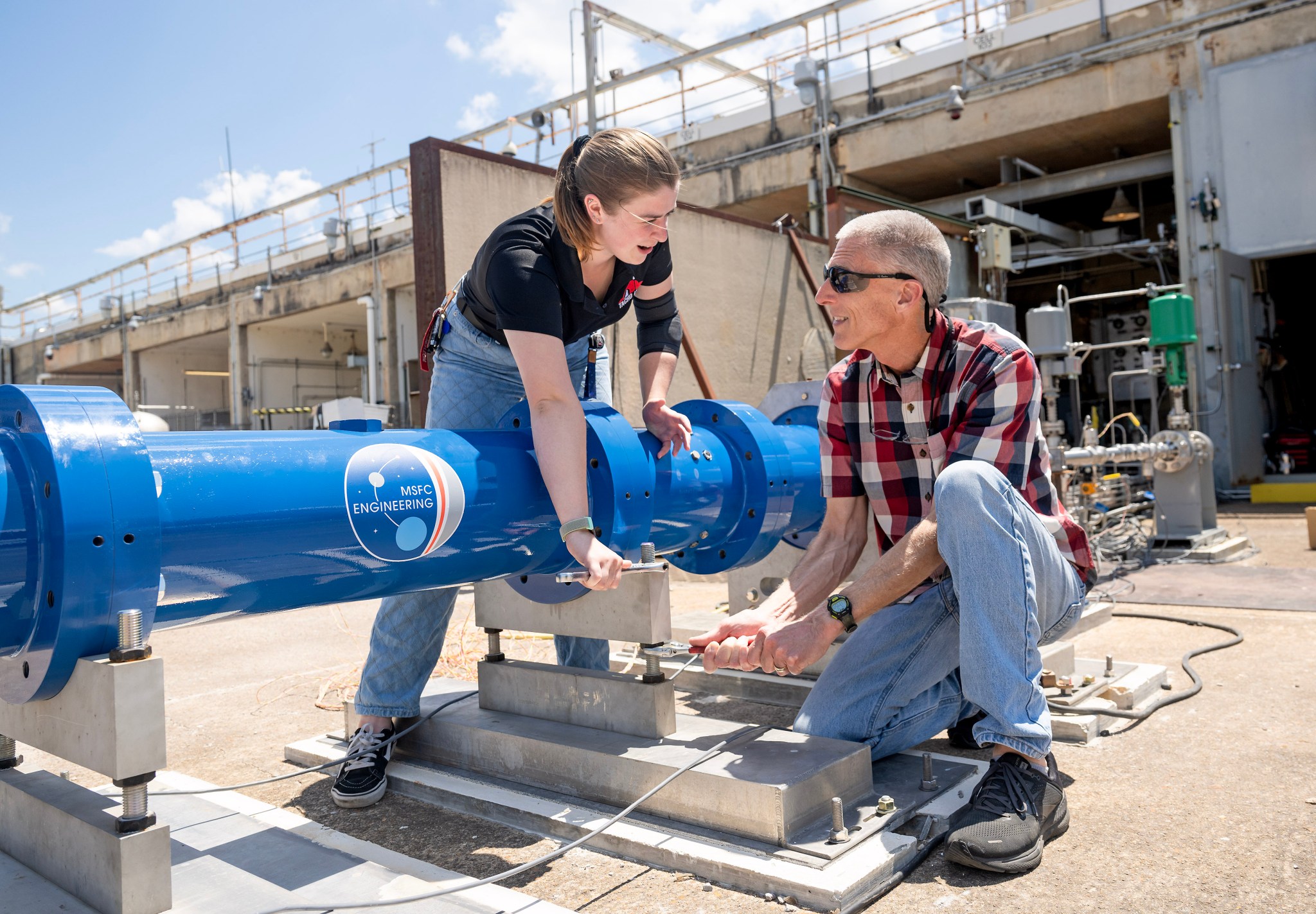
Solid rocket propulsion remains a competitive, reliable technology for various compact and heavy-lift rockets as well as in-space missions, offering low propulsion element mass, high energy density, resilience in extreme environments, and reliable performance.
“It’s time consuming and costly to put a new solid rocket motor through its paces – identifying how materials perform in extreme temperatures and under severe structural and dynamic loads,” said Benjamin Davis, branch chief of the Solid Propulsion and Pyrotechnic Devices Branch of Marshall’s Engineering Directorate. “In today’s fast-paced, competitive environment, we wanted to find a way to condense that schedule. The hybrid testbed offers an exciting, low-cost solution.”
Initiated in 2020, the project stemmed from NASA’s work to develop new composite materials, additively manufactured – or 3D-printed – nozzles, and other components with proven benefits across the spacefaring spectrum, from rockets to planetary landers.
After analyzing future industry requirements, and with feedback from NASA’s aerospace partners, the Marshall team recognized that their existing 24-inch rocket motor testbed – a subscale version of the Space Launch System booster – could prove too costly for small startups. Additionally, conventional, six-inch test motors limited flexible configuration and required multiple tests to achieve all customer goals. The team realized what industry needed most was an efficient, versatile third option.
“The 11-inch hybrid motor testbed offers the instrumentation, configurability, and cost-efficiency our government, industry, and academic partners need,” said Chloe Bower, subscale solid rocket motor manufacturing lead at Marshall. “It can accomplish multiple test objectives simultaneously – including different nozzle configurations, new instrumentation or internal insulation, and various propellants or flight environments.”
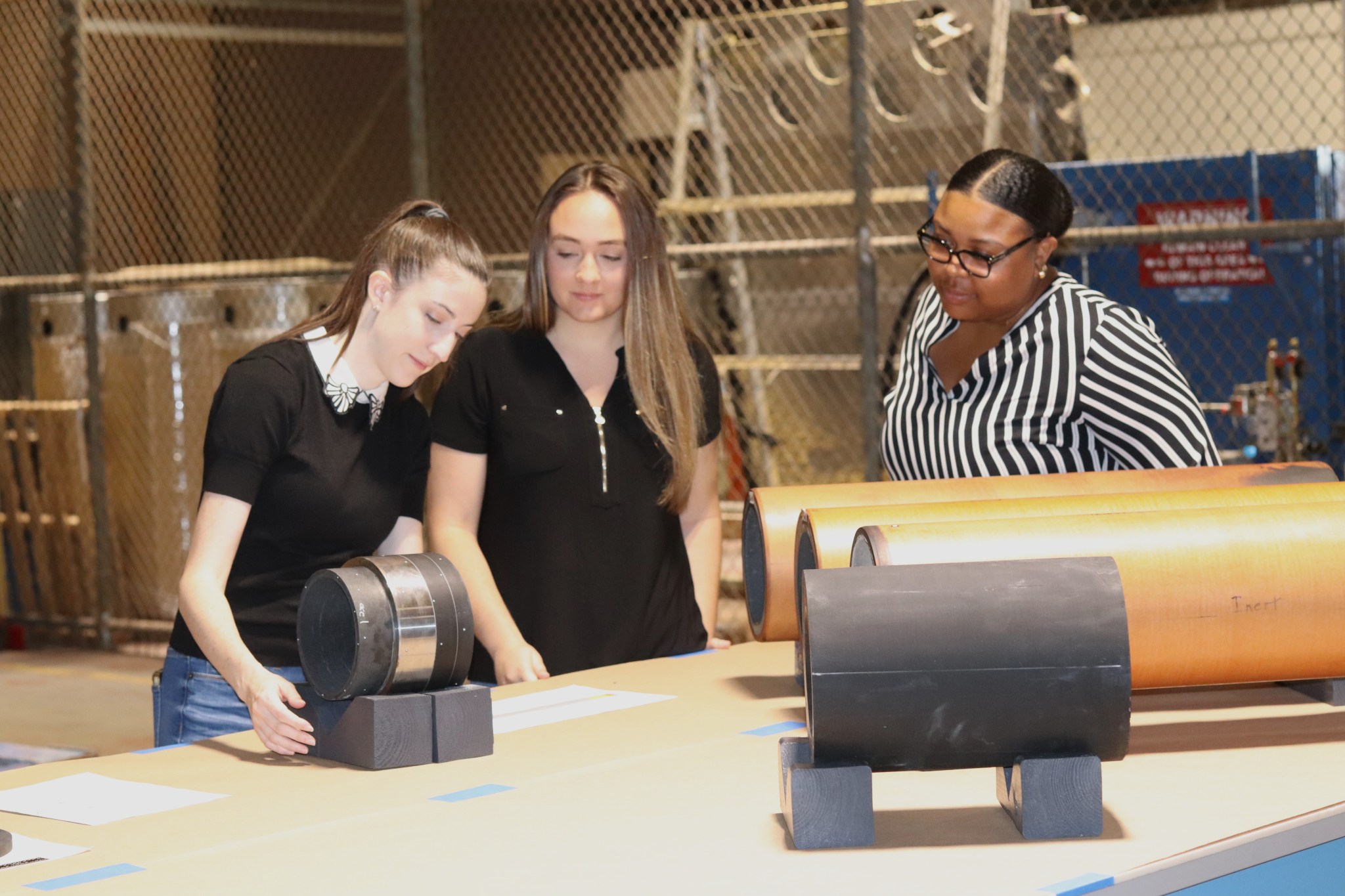
“That quicker pace can reduce test time from months to weeks or days,” said Precious Mitchell, solid propulsion design lead for the project.
Another feature of great interest is the on/off switch. “That’s one of the big advantages to a hybrid testbed,” Mitchell said. “With a solid propulsion system, once it’s ignited, it will burn until the fuel is spent. But because there’s no oxidizer in hybrid fuel, we can simply turn it off at any point if we see anomalies or need to fine-tune a test element, yielding more accurate test results that precisely meet customer needs.”
The team expects to deliver to NASA leadership final test data later this summer. For now, Davis congratulates the Marshall propulsion designers, analysts, chemists, materials engineers, safety personnel, and test engineers who collaborated on the new testbed.
“We’re not just supporting the aerospace industry in broad terms,” he said. “We’re also giving young NASA engineers a chance to get their hands dirty in a practical test environment solving problems. This work helps educate new generations who will carry on NASA’s mission in the decades to come.”
For nearly 65 years, Marshall teams have led development of the U.S. space program’s most powerful rocket engines and spacecraft, from the Apollo-era Saturn V rocket and the space shuttle to today’s cutting-edge propulsion systems, including NASA’s newest rocket, the Space Launch System. NASA technology testbeds designed and built by Marshall engineers and their partners have shaped the reliable technologies of spaceflight and continue to enable discovery, testing, and certification of advanced rocket engine materials and manufacturing techniques.
Smith, an Aeyon/MTS employee, supports the Marshall Office of Communications.
NASA Honors 25 Years of Chandra at July National Space Club Breakfast
Andrew Schnell, acting manager of the Chandra X-ray Observatory at NASA’s Marshall Space Flight Center, honored 25 years of the project’s mission success at National Space Club – Huntsville’s breakfast event on July 16.
Schnell provided insight into Chandra’s history – sharing photos and stories from the project’s initial development, launch, first light images, and some of the most iconic images captured by the telescope to date.
Chandra launched on STS-93 Shuttle Columbia July 23, 1999. Originally designed as a five-year mission, the telescope’s prolonged success is a testament to the agency’s engineering capabilities.
“One of the things that excites me about working with Chandra is that are we not only changing our understanding of the universe today, but the data we collect now may help answer questions astrophysicists haven’t even asked yet.” Schnell said. “One day, an astrophysicist – maybe one that hasn’t been born yet – will have a theory, and our data will be there to help them test that theory.” (Photo Credit: Face to Face Marketing)
Take a Summer Cosmic Road Trip with NASA’s Chandra and Webb
It’s time to take a cosmic road trip using light as the highway and visit four stunning destinations across space. The vehicles for this space get-away are NASA’s Chandra X-ray Observatory and James Webb Space Telescope.
The first stop on this tour is the closest, Rho Ophiuchi, at a distance of about 390 light-years from Earth. Rho Ophiuchi is a cloud complex filled with gas and stars of different sizes and ages. Being one of the closest star-forming regions, Rho Ophiuchi is a great place for astronomers to study stars. In this image, X-rays from Chandra are purple revealing infant stars that violently flare and produce X-rays. Infrared data from Webb are red, yellow, cyan, light blue and darker blue and provide views of the spectacular regions of gas and dust.
The next destination is the Orion Nebula. Still located in the Milky Way galaxy, this region is a little bit farther from our home planet at about 1,500 light-years away. If you look just below the middle of the three stars that make up the “belt” in the constellation of Orion, you may be able to see this nebula through a small telescope. With Chandra and Webb, however, we get to see so much more. Chandra reveals young stars that glow brightly in X-rays, colored in red, green, and blue, while Webb shows the gas and dust in darker red that will help build the next generation of stars here.
It’s time to leave our galaxy and visit another. Like the Milky Way, NGC 3627 is a spiral galaxy that we see at a slight angle. NGC 3627 is known as a “barred” spiral galaxy because of the rectangular shape of its central region. From our vantage point, we can also see two distinct spiral arms that appear as arcs. X-rays from Chandra in purple show evidence for a supermassive black hole in its center while Webb finds the dust, gas, and stars throughout the galaxy in red, green, and blue. This image also contains optical data from the Hubble Space Telescope in red, green, and blue.
Our final landing place on this trip is the farthest and the biggest. MACS J0416 is a galaxy cluster, which are among the largest objects in the Universe held together by gravity. Galaxy clusters like this can contain hundreds or even thousands of individual galaxies all immersed in massive amounts of superheated gas that Chandra can detect. In this view, Chandra’s X-rays in purple show this reservoir of hot gas while Hubble and Webb pick up the individual galaxies in red, green, and blue.
NASA’s Marshall Space Flight Center manages the Chandra program. The Smithsonian Astrophysical Observatory’s Chandra X-ray Center controls science from Cambridge Massachusetts and flight operations from Burlington, Massachusetts.
What's Your Reaction?































